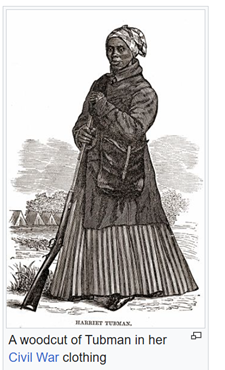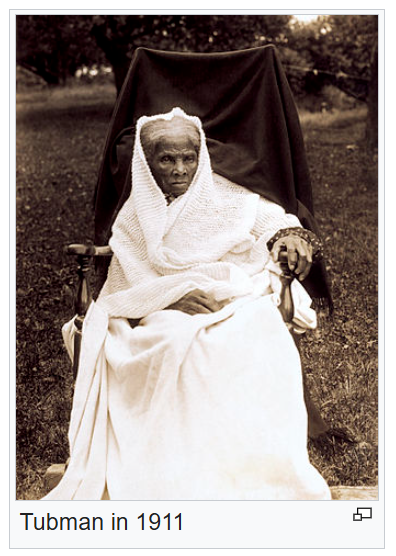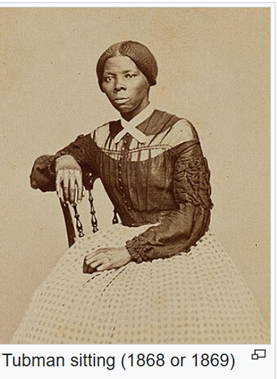By Jim Heffernan
Harriet Tubman was born a slave in 1822 with the name, Ariminta Ross. She grew up on a Maryland plantation and like most slaves was treated harshly until she escaped slavery in 1849.
When she was a young girl, an overseer threw a heavy weight at a fleeing slave, but hit her instead. It split her head open. She survived the injury but was plagued by pain and dizziness for the rest of her life. She also carried the scars from beatings.
Her injury also caused her to have visions which she considered the voice of God. She became a devoutly religious Methodist and fixated on the story of Moses.
She escaped in 1849 by following the north star until she reached safety of the Pennsylvania state line. Later in life, she described her feeling at crossing the line, “When I found I had crossed that line, I looked at my hands to see if I was the same person. There was such a glory over everything; the sun came like gold through the trees, and over the fields, and I felt like I was in Heaven.”
 Instead of remaining where she was safe, she married, changed her name to Harriet Tubman and returned as a fugitive to the region where she was enslaved. She was free and wanted everyone to be free.
Instead of remaining where she was safe, she married, changed her name to Harriet Tubman and returned as a fugitive to the region where she was enslaved. She was free and wanted everyone to be free.
Travelling at night and in the winter, she went on 13 missions and rescued 70 men, women, and children from slavery. They traveled from “safe house” to “safe house” until they reached freedom. Throughout her journeys she had to be wary of “slavecatchers” who were eager to bring them back. Her missions continued until 1862.
A newspaper from the time advertised a reward of $100 (equivalent to today’s $3200) for her capture.
From the beginning of the Civil War, she wanted to help. She began working as a cook and nurse. Soon, she became a scout and a spy for the Union army.
In 1863 she was instrumental at the raid at Combahee Ferry which was a geat success. Here is a newspaper account from the time,
“Colonel Montgomery and his gallant band of 300 black soldiers under the guidance of a black woman, dashed into the enemy’s country, struck a bold and effective blow, destroying millions of dollars worth of commissary stores, cotton and lordly dwellings, and striking terror into the heart of rebeldom, brought off nearly 800 slaves and thousands of dollars worth of property, without losing a man or receiving a scratch. It was a glorious consummation…. The colonel was followed by a speech from the black woman who led the raid and under whose inspiration it was originated and conducted. For sound sense and real native eloquence her address would do honor to any man, and it created a great sensation”.
In 2024, South Carolina posthumously promoted her to Brigadier General in the National Guard.
 After the Civil War, she became active in the Women’s Suffrage movement. This picture shows her in her “suffragette white”. She did not live to see women get the vote. She died in 1913 of pneumonia.
After the Civil War, she became active in the Women’s Suffrage movement. This picture shows her in her “suffragette white”. She did not live to see women get the vote. She died in 1913 of pneumonia.
I find these “black history month” stories inspiring and heart-wrenching. I feel deeply sad that the vile attitudes we had toward blacks in the past are today applied to immigrants and anyone that is considered “other”.
As always, discussion welcome at codger817@gmail.com
I do not exercise copyright, feel free to share.


